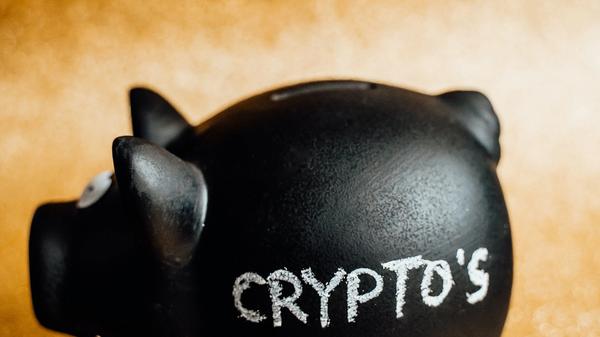VBAL is a self-rebalancing ETF composed of a blend of 60% equity and 40% bonds. With $1.4 billion in assets managed, VBAL is one of Vanguard's most popular one-fund ETF. VBAL is their “Balanced ETF Portfolio''. Its allocation provides investors with long-term portfolio growth with medium-low risk level.
This review of VBAL will cover key facts about VBAL as well as the benefits and drawbacks of investing with it.
What are one-fund ETFs?
You probably heard of them as one-fund ETFs, self-rebalancing ETFs or asset allocation ETFs. They are essentially ETFs of ETFs that automatically rebalance to maintain a desired allocation. These ETFs are meant to be comprehensive and come in various blends of allocations. With allocation of 100% stocks to mostly bonds, there’s something for every kind of investor.
What is VBAL?
Vanguard’s Balanced ETF Portfolio, VBAL consists of 60% equities and 40% bonds. VBAL is an ETF portfolio made up of underlying Vanguard ETFs with the following allocation:
VBAL Holdings
As of December 31, 2020
| Ticker | Security Name | Percentage |
|---|---|---|
| VUN | Vanguard US Total Market Index ETF | 24.80% |
| VAB | Vanguard Canadian Aggregate Bond Index ETF | 23.50% |
| VCN | Vanguard FTSE Canada All Cap Index ETF | 17.80% |
| VIU | Vanguard FTSE Developed All Cap ex North America Index ETF | 12.80% |
| VBG | Vanguard Global ex-US Aggregate Bond Index ETF CAD-hedged | 9.10% |
| VCB | Vanguard US Aggregate Bond Index ETF CAD-hedged | 7.00% |
| VEE | Vanguard FTSE Emerging Markets All Cap Index ETF | 5.00% |
VBAL offers broad geographical diversification. Here’s a breakdown of its top 95% of net assets:
VBAL Geographical Allocation
As of December 31, 2020
| Country | Percentage |
|---|---|
| United States | 41.00% |
| Canada | 29.40% |
| Japan | 5.20% |
| China | 3.40% |
| United Kingdom | 2.90% |
| France | 1.90% |
| Germany | 1.80% |
| Switzerland | 1.80% |
| Australia | 1.50% |
| Korea | 1.30% |
| Taiwan | 1.30% |
| India | 0.90% |
| Hong Kong | 0.70% |
| Netherlands | 0.70% |
| Sweden | 0.70% |
| Brazil | 0.50% |
VBAL also offers industry diversification, with the following allocation:
VBAL Industry Allocation
As of December 31, 2020
| Industry | Percentage |
|---|---|
| Financials | 18.60% |
| Technology | 18.10% |
| Consumer Discretionary | 13.30% |
| Industrials | 12.80% |
| Health Care | 8.80% |
| Basic Materials | 6.70% |
| Energy | 5.70% |
| Consumer Staples | 5.20% |
| Utilities | 3.90% |
| Telecommunications | 3.80% |
| Real Estate | 3.10% |
VBAL started in January 2018 so there is limited performance history. Annual return for 2020 was 10.24% and the average annual return since inception is 6.65%.
VBAL is composed of both stocks and bonds, and as such it distributes both stock dividends and bond interest payments, putting VBAL’s distribution yield at 1.86%.
VBAL’s Management Expense Ratio (MER) is 0.25%.
The benefits
The obvious benefit of a one-fund ETF like VBAL is how simple they are to manage. You don’t need to think of balancing your portfolio’s allocation because each unit is already balanced.
One-fund ETFs are also well diversified, offering some protection against unsystematic market risk. VBAL is also cheap, especially when compared with similar investment products like mutual funds and robo-advisors.
The drawbacks
VBAL sounds like a perfect all-in-one option, right? While it’s true that one-fund ETF are convenient and easy, it is often recommended to invest in the underlying ETFs instead. Here’s why:
1. Better MER
As mentioned earlier, VBAL has a MER of 0.25%. Here’s the breakdown of your MER if you were to hold the same allocation of ETFs as VBAL individually:
VBAL MER
As of December 31, 2020
| Ticker | Security Name | Percentage | MER |
|---|---|---|---|
| VUN | Vanguard US Total Market Index ETF | 24.80% | 0.16% |
| VAB | Vanguard Canadian Aggregate Bond Index ETF | 23.50% | 0.09% |
| VCN | Vanguard FTSE Canada All Cap Index ETF | 17.80% | 0.06% |
| VIU | Vanguard FTSE Developed All Cap ex North America Index ETF | 12.80% | 0.22% |
| VBG | Vanguard Global ex-US Aggregate Bond Index ETF CAD-hedged | 9.10% | 0.38% |
| VCB | Vanguard US Aggregate Bond Index ETF CAD-hedged | 7.00% | 0.26% |
| VEE | Vanguard FTSE Emerging Markets All Cap Index ETF | 5.00% | 0.24% |
| Weighted Average | 0.16% |
So, we’re talking about an extra 0.09%. What’s the big deal? Well, on a portfolio value of $100,000, it already is a $90 difference per year. The issue really is that your portfolio (hopefully) keeps growing and so does the value of this difference. This is also money that you lose compounding interest on year after year. Over the course of your lifetime, it can add up to hundreds of thousands in extra fees and missed returns.
2. Rebalancing is not that hard
When you think of rebalancing, you think of spending time on spreadsheets and placing individual trades at your brokerage. With the right tools, rebalancing can be an easy task. Passiv lets you save time (and head space) on rebalancing.
Set up your target portfolio and Passiv will recommend the trades needed to rebalance your portfolio. After review, you can place these trades directly into your brokerage account at the click of a button.
3. One-fund ETFs are rigid
While you don’t have to think too much about your asset allocation with VBAL (other than picking your split between stock and bonds), you also cannot make any changes to your allocation.
For example, VBAL has a strong bias towards Canada, representing almost 30% of the fund while Canada represents only about 4% of global GDP. It’s fine for a lot of Canadians for various reasons (stable market, knowledge of market, good historical returns, limits currency risk, tax advantages), but some people don’t want to have such a strong bias. If you invested in VBAL and wanted to reduce the allocation of Canadian securities (VCN and VAB), that would be impossible.
But if you held the underlying ETFs, you could easily customize your allocation to reflect your financial philosophy, plus you’d be able to optimize your weighted average MER.
4. Changing your allocation can get challenging
One-fund ETFs are generally associated with an investment time horizon. When you get closer to the end of your investment life, your stock allocation should decrease compared to stock to limit volatility risks.
How would you change your portfolio allocation invested 100% in VBAL to a portfolio of 100% of its more conservative counterpart VCNS?
You could either:
- Sell all your VBAL and use the cash to buy VCNS. That would be very ineffective in terms of fees and taxes, especially if you did that regularly throughout your investment life.
- Calculate how much of an even more conservative one-fund ETF (like VCIP) you would have to buy to get to an allocation similar to VCNS with both VBAL and VCIP. That sounds more complicated than rebalancing, doesn’t it?
Since all of Vanguard’s one-fund ETFs hold the same securities with different allocations, if you hold each ETF separately in your portfolio, it is much easier to adjust your portfolio’s risk tolerance over time. With Passiv, you can adjust your target allocation in a few simple steps.
Summary
All in all, VBAL is good to get your feet wet as an investor. It’s a simple, well-diversified, relatively low cost option. For investors who are concerned about paying extra MERs just to rebalance when it’s easy to do yourself, it is a good idea to consider holding the underlying ETFs of VBAL instead.
Source: VanguardCanada.ca
Do you want to learn more about one-fund ETFs? Read our reviews of VGRO, XGRO and XBAL


